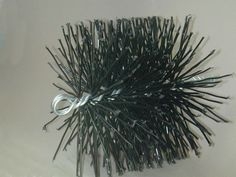Anatomy of a Chimney Brush

While the chimney brush may bring a picture of Mary Poppins and Bert singing a cheery chimney song with their brushes as the perfect prop, this brush is so much more. Not just a pretty face, the chimney brush is a tool designed for both utility and purpose. You may think that all chimney cleaning brushes are created equal. This is NOT the case. There are more differences in models than you may think. Which one is right for you will be determined by a number of factors including the length of your flue, its shape, the material it is constructed of, and even the type of creosote buildup you are experiencing.
In the article below I dissect the anatomy of one of the modern world's most basic tools chimney cleaning brushes.
Stiff Bristles – Most standard cleaning brushes will feature an abundance of stiff bristles. Just like tooth brushes, chimney brushes come in different levels of stiffness from soft to medium all the way up to extra stiff bristles. Harder bristles are perfect for thicker layers of buildup on the flue and the softer bristles help with dusty, easy-to-remove creosote.
Varying Lengths – Chimney cleaning brushes also come in a variety of lengths for differing flues. First, the bristles can vary in length. Homeowner grade brushes are found in ¼" length while professional chimney sweep grade can come in ¾" length. The brush itself can vary in width from 5 inches to 12 inches round. Rods for the chimney come in lengths of four and five feet. The length of your flue will determine how many rods you need to use at any given time.
Poly, Wire, or Both – The bristles of chimney cleaning brushes can come in a number of differing materials or a combination of them as well. Polypropylene and wire are both standard materials that the brush head can be constructed of. Poly brushes are very stiff and work well in metal flues. Plastic brushes are ideal for masonry work along with those chimneys featuring flue tiles. You can also find a combination of both polypropylene and wire brush heads to help clean your flue.
Brush Shape – Who knew that brushes can not only come in varying lengths and be made of different materials but also can have a brush bristle head in different shapes Round, rectangle, and square are all options in brush shapes. A round shape is perfect for square and rectangular flues allowing it to stretch reaching those tough corners.
Now that you have learned the anatomy of the varying models of brushes, you are ready to make a well-informed decision ensuring you select the perfect brush for your home and flue. Keep in mind you may need to get more than one to handle all the environments within your flue. Are you still unsure on how to clean your chimney When in doubt, a reputable chimney sweep can clean your flue using the latest in chimney supplies all designed to get your home ready for the heating season.
